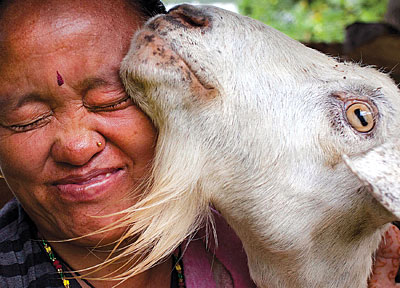 JANA ASENBRENNEROVA |
Last month's budget recognised cooperatives as one of the three pillars for Nepal's economic upliftment, setting aside grants, seed money, capital subsidies, concessional loans and rebates on customs and duties. This set off an uproar from the private sector.
Those who have noticed a cooperative in every third house in district headquarters (sometimes even three in one house) may ridicule this special treatment for what are sometimes fly-by-night operations to loot shareholder money. Cooperatives have been blamed for siphoning equity from the market with their higher interest rates for deposits, and leaving established banks high and dry.
Captains of industry criticised the government for abandoning the free market, rolling back the policy of economic liberalisation that has been the central facet of Nepal's economy since 1990, and taking the country back to a command economy.
There are bad eggs in all sectors of the economy. There are crooked businesses, sections of the private sector are involved in huge scams to cheat on VAT, trading houses are fronts for smugglers. It is therefore not unnatural that some cooperatives are crooked, but it would be unfair to tar them all with one brush.
Cooperatives have a business model that keeps the community welfare at the centre of its focus, and is not driven solely by shareholder dividend. And it just happens that across Nepal, there are amazing success stories of rural cooperatives that have helped lift living standards of farmers.
Perhaps what gives cooperatives a bad name is that some savings and loan schemes run by scoundrels have ripped off members. But there are now over 22,500 cooperatives in Nepal with more than three million members and a total of Rs 122 billion in deposits and Rs 20 billion in capital. They are growing and have invested in dairy, agriculture, orchards, vegetables, bee-keeping, tea, coffee and even hydro-electricity.
Cooperatives can create economic linkages at the grassroots and can be especially effective in bringing together disadvantaged communities in rural areas. Members benefit by improved bargaining position vis-�-vis middlemen and access to markets for their produce. Many cooperatives have mandatory rules to invest a proportion of their profits in community development. A cooperative of freed Kamaiyas in Kailali first helps its member farmers with equipment, training and seeds and then markets their harvest. The cooperative now has 427 members and apart from benefiting its members, also runs a school in its locality.
Cooperatives have also been credited for their role in economically empowering women. Nearly half of all members of cooperatives in Nepal today are women. With many men away working in the Gulf, women have coalesced into groups that save and invest in the community.
But cooperatives are still largely unorganised, governed by the Cooperative Act 1992 without a proper system of regulation and monitoring.
Most urban saving and credit cooperatives have been exploiting loose regulations, playing fast and loose with depositor money.
Nepal Rastra Bank and the Department of cooperatives are supposed to supervise and monitor saving and credit cooperatives with the annual transactions exceeding Rs 50 million, but central bank already has its hands full with over 200 financial institutions.
If cooperatives are indeed to become the third pillar for the country's economic development, the government has to weed out the crooks with better regulation and not punish those doing vital development work at the grassroots. Non-conforming cooperatives must restructure or shut down, but there is no reason for the private sector to panic.
Read also:
Earning from nature to pay for its upkeep, KUNDA DIXIT in KASKI
Unique cooperative puts a price tag on protecting the ecosystem
Rethinking cooperatives, THOURAYA BAHRI
For the poorest of the poor microcredit loans can actually make things worse



